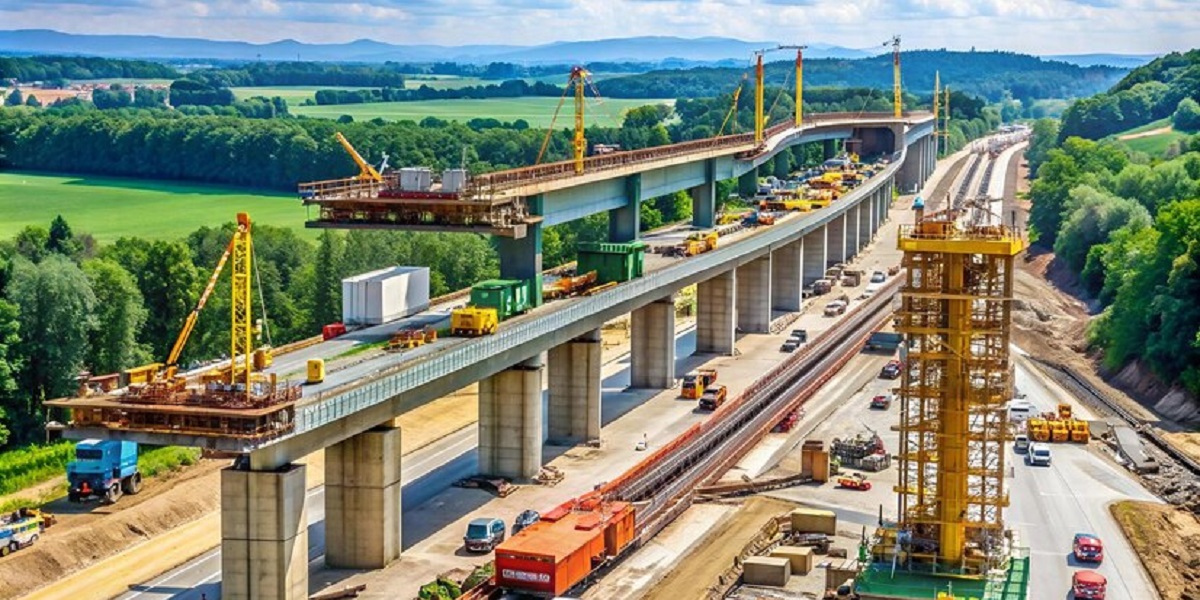In modern highway construction, steel and cement are
essential materials. Steel provides the strength and flexibility needed to
support heavy traffic and withstand environmental stresses, while cement forms
a durable foundation for road surfaces. This combination ensures roads are
strong, long-lasting, and capable of handling high loads and varying weather
conditions. Together, steel and cement set the standard for resilient and
effective highway infrastructure.
The Role of Steel in Highway
Construction
Steel is a crucial element in highway
construction due to its exceptional strength and flexibility. It is used
extensively in the following areas:
- Reinforced Concrete:
Steel reinforcement bars (rebar) are embedded in concrete to enhance its
tensile strength. This combination ensures that the highway structures can
withstand heavy loads and resist cracking.
- Bridges and Overpasses: Structural steel is used in the construction of
bridges, overpasses, and support beams. Its high strength-to-weight ratio
makes it ideal for these large-scale projects.
- Guardrails and Barriers: Steel is also utilized in safety features such as
guardrails and barriers, providing essential protection for road users.
The Importance of Cement in Road
Infrastructure
Cement is the binding agent in
concrete, which is fundamental for constructing durable road surfaces and
structures. Its benefits include:
- Durability:
Cement-based concrete withstands harsh weather conditions and heavy
traffic, making it an ideal material for road surfaces.
- Flexibility:
Modern cement formulations can be customized to meet specific
requirements, such as rapid setting times or enhanced resistance to
environmental factors.
- Load-Bearing Capacity:
Cement concrete provides the necessary strength to support the heavy loads
encountered on highways, ensuring a stable and long-lasting road surface.
Innovations in Steel and Cement Use
Recent advancements in steel and
cement technology have brought significant improvements to highway
construction:
- High-Performance Concrete: Innovations in cement mix designs, such as
ultra-high-performance concrete (UHPC), offer enhanced strength and
durability.
- Corrosion-Resistant Steel: The development of corrosion-resistant steel and
protective coatings prolongs the lifespan of steel components used in
highway infrastructure.
- Sustainable Practices:
The use of recycled materials and eco-friendly cement formulations
supports sustainability in road construction.
Applications and Benefits
The integration of advanced steel
and cement technologies in highway construction results in:
- Increased Longevity:
High-quality materials extend the lifespan of road infrastructure,
reducing the need for frequent repairs and replacements.
- Enhanced Safety:
Durable materials improve road safety by providing stable and reliable
surfaces for vehicle operation.
- Cost Efficiency:
Long-lasting construction reduces maintenance costs and contributes to
overall cost savings.
The integration of advanced steel
and cement technologies is transforming highway construction with increased
longevity, enhanced safety, and greater cost efficiency. As these materials
evolve, their role in creating durable and sustainable road infrastructure becomes
even more critical. Discover how the latest advancements in steel and cement
are shaping the future of highway construction at RAHSTA Expo 2024. Join us on
October 9th and 10th at the Jio World Convention Centre, Mumbai, to explore
cutting-edge innovations and connect with industry experts. Witness
cutting-edge innovations and network with industry experts shaping the future
of road infrastructure.
